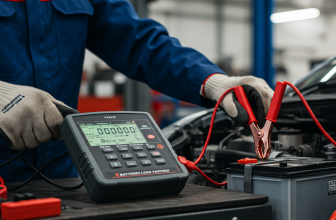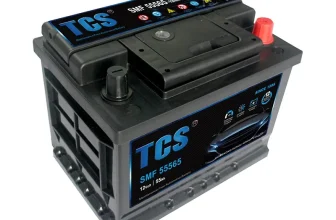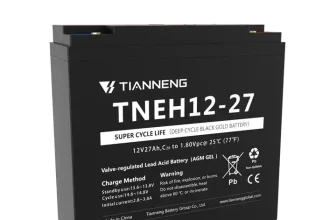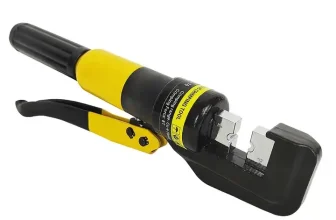A Battery Cable End Crimper is a specialized tool used predominantly in automotive, marine, and other industrial settings for securing terminals or connectors to the ends of a battery cable. This particular tool is designed to exert a great deal of pressure on a small area, effectively merging the cable and the terminal into a single, solid connection. This process is known as crimping, and it is crucial to ensuring electrical conductivity and consistent power supply from a battery to an engine or other devices. The Battery Cable End Crimper is, therefore, a fundamental tool in the creation of effective, reliable and safe electrical connections.
Brief overview of its importance
Battery cable end crimpers are highly important tools for any electrical project, especially those involving battery cables. These tools are paramount for making secure, quick, and efficient connective joints between wires and their respective terminals or connectors, typically in battery setups. Without a proper cable end crimper, connections may lead to poor electrical contact, which can significantly impair the efficiency of your electrical system. Adequate use of this crucial tool ensures the longevity of the system, prevention of potential short circuits or wire damages, and maintenance of a superior energy supply. Thus, the importance of a battery cable end crimper cannot be overstated.
Detailed Overview of Battery Cable End Crimpers
Purpose and function
Battery Cable End Crimpers serve an essential role in creating secure and reliable connections in automotive electrical systems. This tool’s main function is to crimp -or connect- the battery cable to the cable end terminals. Using these devices, you are able to clamp different types of connectors or cable ends to the battery wires, thus ensuring a solid, tight, and resilient connection required for optimal electrical performance.
The importance of a solid electrical connection in these contexts can’t be overstated. The battery cables are responsible for transferring electrical currents from car batteries to various parts of the vehicle’s electrical system. If the connection to the battery terminals isn’t secure, it can lead to a range of problems, including reduced efficiency or even failure of the electrical systems, resulting in potential damage to the vehicle and dangerous situations on the road.
In summary, the primary purpose of a battery cable end crimper is to bind the cable ends to the battery cables, ensuring a robust and secure connection for the safe and efficient function of the car’s electrical systems. They are a critical tool in the production and maintenance of vehicles, making them an essential part of the automobile industry.
Explanation on how it works
A battery cable end crimper operates on a relatively straightforward principle. When you apply force to the handles or button of the crimper, it translates that force to the crimping head where the battery cable end is placed. This mechanism is similar to a pair of pliers, but instead of two flat surfaces coming together, the crimper has specially designed jaws that deform the metal component or terminal to firmly secure it to the cable.
Some battery cable end crimpers utilize a hydraulic mechanism for applying the necessary force. This works by pressurizing a fluid within the system, using a small effort applied through the handle or button which is then magnified into a much greater force at the crimping head.
In essence, the function of a battery cable end crimper is based on simple physics, converting manual force or hydraulic pressure into a shaped compression, sufficient to form a robust and reliable connection between a battery cable and its end terminal. It’s crucial to note that the effective operation of a crimper relies on the appropriate matching of the cable size and terminal type with the specifications of the crimper. A correctly executed crimp ensures optimal electrical conduction and secure fastening.
Key components of a battery cable end crimper
Battery cable end crimpers comprise several key components that work together to enable their purpose and function.
At its core, a battery cable end crimper has a set of jaws or dies. These jaws are designed to exert correctly measured pressure onto a metallic crimp and the specific degree of pressure will depend on the crimp size and type being used. Usually made of hardened steel, these jaws are built for durability and resistance to wear and tear, ensuring they retain their ability to crimp accurately over time.
Another crucial component of a crimper is the handle or lever. This component is designed to provide necessary leverage when crimping the cable ends. By applying force to it, the user can bring together the jaws and create a tight, secure crimp. The handle sometimes houses a ratchet mechanism to ensure consistent crimp pressure and prevent cracking or damaging the crimp or cable.
In types like hydraulic battery cable end crimpers, there is an additional hydraulic system that increases force without a proportionate increase in effort from the user. This system generally includes components like piston, cylinder, pump, and fluid.
Lastly, many crimpers come with color-coded or numbered dies or markers, allowing users to easily determine the appropriate slot or size for a crimp.
In conclusion, various components of a battery cable end crimper function collectively to ensure the reliable and efficient crimping of battery cables.
Uses and Applications
Professional usage scenarios
Battery cable end crimpers are routinely used in a variety of professional settings. For instance, they play a crucial role in the automotive industry. Technicians use these tools for installing new battery cables in vehicles or replacing old, worn-out ones. The secure fastening provided by a well-crimped connector ensures that the vehicle’s electrical system operates without intermittent connection issues, which could lead to larger problems such as breakdowns or system failures.
In addition, electricians and other professionals involved in the fields of installation and repair of electrical or digital systems, like alarm systems or network cable installations, also use battery cable end crimpers. These specialized tools are often used to put connectors at the ends of wires for a more secure attachment to terminals. The nature of these professions requires a high degree of precision, and the right crimper can make the task significantly more manageable.
Moreover, professionals in the aerospace and defense industries also use crimpers for creating secure and high-performing electrical connections. Here, an improperly crimped cable could lead to significant operation failures, making the use of a reliable crimper pivotal.
Finally, many manufacturing industries also use battery cable end crimpers to efficiently handle large-scale crimping tasks during production. These activities often call for a tool that can not only maintain a high degree of accuracy, but also withstand high-volume usage without losing its effectiveness.
Personal/domestic application
While a battery cable end crimper might be most commonly associated with professional use, it certainly has its place in personal or domestic applications as well. Homeowners with a knack for do-it-yourself projects will find this tool incredibly useful.
One of the most common uses at home is for automotive repairs. Car batteries require proper cable connections to function effectively, and a battery cable end crimper can ensure a secure and stable connection. For instance, if you’re looking to replace a worn-out battery cable or modify the wiring in your vehicle, a crimper becomes indispensable.
The tool is also handy for setting up home entertainment systems. Crimping cables allows for the sleek and organized setup of various electronic components.
And let’s not forget about solar panel installations. As more and more homes turn to sustainable energy sources, homeowners often need to connect or extend cables during the installation process – a task made simple and efficient with a crimper.
In summary, whether it’s for automobile repairs, at-home projects, or even DIY solar panel installation, the battery cable end crimper is a practical tool in any household.
Instances which demand the use of a crimper
Battery cable end crimpers become crucial in numerous situations that require secure electrical connections. These tools are essential when wiring a new vehicle, boat, or other machinery reliant on battery power. In these scenarios, firm connections are created between the battery cable ends and their corresponding terminals.
Similarly, when conducting repairs on aging or malfunctioning vehicles, cable end crimpers are indispensable. They can also be used to add, remove, or modify the configuration of the battery cables.
In household situations, crimpers can be utilized for smaller-sized wires as well like in speaker wires or power cords. This helps in establishing proper connections without the need for soldering.
Crimping tools also become essential during emergencies, especially in remote locations where professional help may not be immediately available, and on-site repairs need to be conducted promptly – say, in an RV or a boat trip. Crimpers serve as valuable tools to quickly reconnect severed cables, ensuring a reliable connection.
In industrial settings, crimpers are often used in the assembly and maintenance of heavy machinery, and in the production of electronics, where they can create robust and durable connections on the factory floor.
Ultimately, any scenario that involves the joining of battery cables to terminals, or any wire to a connector, may necessitate the use of a battery cable end crimper. It is, undoubtedly, a versatile tool for every toolbox.
Types of Battery Cable End Crimpers
Hydraulic crimpers
Hydraulic crimpers are one of the commonly used types of battery cable end crimpers. They are designed for heavy-duty crimping tasks and are known for delivering remarkable crimping force that wouldn’t be possible with manual crimpers. This makes them ideal for large-scale or industrial applications involving large wires and terminals.
Hydraulic crimpers usually come with a set of dies that can be changed to suit the size of the cable end and terminal to be crimped. They are driven by hydraulic pressure, which is created by manually pumping a handle or by using an electric motor, reducing the physical effort required from the user.
Although hydraulic crimpers are highly efficient, they can be bulky and expensive. They may not be suitable for use in tight spaces or for occasional domestic repairs due to their size and cost. However, for tasks that involve repeated crimping of thick cables and heavy lugs, investing in a hydraulic crimper may prove to be a practical and time-saving choice.
Handheld crimpers
Handheld crimpers are one of the most popular variants of battery cable end crimpers. They are compact, portable, and require no external power source, making them ideal for applications that require mobility and ease of use. They are manually operated and often come equipped with a variety of dies to accommodate different sizes and types of cables.
These crimpers provide quick and efficient crimping, and they’re especially useful in areas where space and accessibility might be an issue, such as narrow engine compartments or for field repairs. You can easily store them in a toolbox and carry them around wherever you go.
Despite their convenience, handheld crimpers do have their limitations. The amount of force you can apply with these crimpers is dependent on your hand strength, which can pose a challenge when dealing with larger cables or when crimping multiple cables in a short span of time can lead to hand fatigue. Besides, the quality of crimping may vary depending on the user’s technique.
Overall, handheld crimpers are ideal for light to moderate use, and for applications where portability and accessibility are crucial.
Benchtop crimpers
Benchtop crimpers are another type of battery cable end crimper, designed for higher volume crimping. Unlike their handheld and hydraulic counterparts, benchtop crimpers are stationary and designed to handle heavier duty crimping jobs. They are often used in automotive repair shops, factories, or other professional settings where larger quantities of cables need to be crimped.
These crimpers function by being mounted on a workbench or similar workstation. The battery cable is inserted into the crimper and then a lever is manually operated to enact the crimping process. Some advanced versions automate this process, requiring only the push of a button.
The main advantage of benchtop crimpers is their ability to handle heavier duty applications and larger volumes. They also often create a more consistent and better-quality crimp, making them ideal for professional uses. However, their size and the need for a stationary work area make them less portable and potentially less suitable for smaller applications or less frequent use.
In short, benchtop crimpers offer power and consistency but lack the portability of handheld and hydraulic models. Choice should depend on the specifics of your crimping needs.
Explanation of the pros and cons of each type
Hydraulic crimpers are potent tools equipped with a hydraulic pump that provides the force required for crimping. They are ideal for large-scale projects or professional use where high-volume crimping is needed. The main advantage of these crimpers is that they require less manual effort and provide stronger crimps. On the flip side, they tend to be more expensive, bulkier, and less portable.
Handheld crimpers are more compact and portable, making them perfect for small tasks or home usage. They require manual pressure to crimp, which can be taxing during large volume jobs. Nevertheless, their affordability and ease of use make them the go-to for many DIY enthusiasts and small scale repair shops.
Benchtop crimpers are for high-precision and consistent crimping and are typically used in assembly lines or manufacturing units. They are mounted onto workbenches for stability. The advantage of benchtop crimpers is their ability to deliver uniform and reliable crimps. However, they lack the flexibility and portability of handheld crimpers and are also more costly.
In conclusion, the choice of crimper varies based on the user’s requirements. Hydraulic crimpers are valuable for high-volume and professional work, handheld crimpers are ideal for on-the-go repairs and small-scale projects, and benchtop crimpers work best in industrial settings where precision and uniformity in crimps are essential.
How to Use a Battery Cable End Crimper
Step-by-step instructions
Firstly, gather all the necessary items: the battery cable, the terminal end, and your battery cable end crimper. It’s imperative to make sure that the terminal end fits the battery cable and the cable has been appropriately stripped to expose the wire.
In the second step, insert the stripped end of the battery cable into the terminal end. Ensure that the stripped wire fills up the terminal end but doesn’t protrude excessively.
The third step involves positioning the battery cable crimper. If you’re using a handheld crimper, place the crimper around the barrel of the connector where the wire is inserted. For hydraulic and benchtop crimpers, you place the cable end in the correct die slot.
Subsequently, apply pressure to crimp the terminal onto the cable. For hand crimpers, this is generally done by squeezing the handles together. For a hydraulic crimper, you would pump the handle until the correct pressure is reached, and lastly, for benchtop crimpers, you would pull the lever down.
Once crimped, release the pressure from the crimper and remove the now connected terminal end and cable. At this point, the battery cable should be securely attached to the terminal end.
Finally, it’s always a good idea to inspect your work. Make sure the crimp is tight and secure, and that no stray wires are sticking out, which could potentially cause a short. The cable shouldn’t pull from the terminal end easily.
Remember, achieving a good crimp requires both practice and patience. Don’t be discouraged if your first few attempts don’t come out perfect. Keep at it, and you’ll soon be crimping like a pro.
Safety precautions when using a crimper
While a battery cable end crimper is a highly useful tool, it is also potent, which means it must be used with care to avoid injury. Here are a few key safety precautions when using a crimper:
- Wear protective gear: Always wear safety glasses to protect your eyes from possible debris or loose wires. Gloves can also prevent accidental cuts or scrapes on your hands from sharp wires.
- Inspect the tool before use: Before you get started, it is crucial to examine the crimper for any signs of damage. Make sure there are no loose or disconnected parts, as these could affect the tool’s functioning or prove hazardous during use.
- Ensure a stable work area: It is important to work on a stable, clutter-free surface to reduce the risk of accidents.
- Handle with care: With its potent grip, a battery cable end crimper can cause injury if mishandled. Always ensure your fingers are away from the crimping area when using the tool and release the handles slowly after crimping.
- Use the right size: Battery cable end crimpers come with different size dies. It’s crucial to use the correct size for the cable you’re working with to avoid damaging both your tool and the cable.
- No forceful handling: If the crimper is jamming or not performing correctly, never try to force it. This could lead to injury or further damage to the unit. Instead, stop and find out what the problem is, and fix it or seek help.
- Keep away from children: Like any other potential tool, a battery cable end crimper should be kept out of reach of children. Always store it in a safe place after use.
Remember, safety always comes first. By adhering to these precautions, you can ensure a safe and effective crimping experience.
Tips and pointers for effective crimping
Knowing how to effectively use a battery cable end crimper can save you both time and effort, and more importantly, it ensures a secure and reliable connection. Here are some tips and pointers:
- Use the right size die: It’s essential to use the right size die for the particular wire gauge you’re working with. Using a die that is too small or too large can either damage the wire or result in a loose connection.
- Clean the wires: Before you begin crimping, always clean the wires to remove any corrosion, dirt, or grease. A clean surface is essential for a solid crimp connection.
- Strip correctly: Be careful not to nick the wires while stripping them back. Damage to the wires can weaken the connection and potentially interrupt the current flow.
- Insertion: Make sure that the cable is inserted properly into the crimper. The wire should fit snugly without any excessive force required.
- Perform a pull test: After crimping, perform a pull test to ensure the crimp is secure. The cable should not pull out of the terminal end with moderate force applied.
- Don’t over-crimp: Over-crimping can reduce the strength of the connection, disrupt the flow of current, and potentially damage the wires. Always follow the manufacturer’s guidelines concerning crimping force.
- Practice makes perfect: Keep practicing crimping on some scrap cable before attempting to do it on the actual cables of a device. This will help you to get a feel for the process and to gauge the right amount of force needed.
Remember, good crimping is an art. With practice and patience, you’ll produce secure, efficient connections in no time.
Choosing the Right Battery Cable End Crimper
Factors to Consider When Buying a Crimper
Just like any other tool, selecting the right battery cable end crimper requires a careful assessment based on several factors to ensure it effectively meets your needs.
Firstly, consider ergonomics and comfort. Handheld cable end crimpers should have a comfortable grip and should not be disproportionately heavy; otherwise, user fatigue could set in quickly.
The second factor to address is the type of battery cable you will be working on frequently. Some crimpers are designed specifically for particular types of cables. Understand your requirements before purchasing the crimper.
Durability is another key consideration. The crimper should withstand the test of time and intensive usage. Opt for crimpers made from high-quality materials because these tools are more reliable and longer-lasting.
The fourth factor to regard is the price. Depending on your budget, you might want to strike a balance between affordability and quality. Some expensive crimpers may offer additional features that could be beneficial for your work.
Lastly, consider the brand reputation. Choosing a crimper from a recognized brand often guarantees a certain level of quality, customer support, and potentially a warranty.
By considering these factors, you can confidently purchase a battery cable end crimper that is well-suited for your needs.
Recommendations Based on Different Usage Scenarios and Needs
For professional usage or large-scale projects, a hydraulic crimper is the most recommended. They offer more power and accuracy, making them ideal for continuous, heavy-duty use. However, they are more expensive and may require professional handling.
If you are a DIY enthusiast or need a crimper for occasional use, a handheld crimper could be the better choice. They are more affordable, portable, and user-friendly. They may lack the power of their hydraulic counterparts, but for small-scale tasks, they are more than adequate.
In circumstances where durability, stability and precision are paramount, such as in a workshop setup, a benchtop crimper would be a suitable option. Built to last, these crimpers provide consistent results, making them ideal for repetitive tasks. They are, however, less portable and may require more space.
For those who prioritize budget considerations, the most economical choice would be a manual or handheld crimper. While they might not offer the same level of precision or longevity as other types, they can certainly get the job done for minor tasks and infrequent use.
Also, take into consideration the size of the cables you will be working with. Some crimpers are designed to handle a wider range of cable sizes than others. Understanding your needs and balancing them against your budget will help you select the best battery cable end crimper for your circumstances.
Conclusion
Importance and Uses of a Battery Cable End Crimper
In wrapping up, the instrumental role played by a battery cable end crimper in various settings can’t be overlooked. Providing a high-quality, dependable bond between battery cables and their respective terminals, this tool fundamentally ensures the smooth operation of battery-powered devices and vehicles. Whether in a professional automotive workshop, a factory, or even just at home for personal DIY projects, the crimper’s application is far-reaching. By choosing the right kind can significantly influence the efficiency and effectiveness of any crimping task at hand. With this all-round tool, managing battery cables has never been easier and more convenient. However, despite its usefulness, it is vital to emphasize the necessity of proper use and safety measures in handling this tool to ensure not only effective operation but also the user’s personal safety.
Proper Usage and Safety Precautions
Respecting and adhering to safe practices when using a battery cable end crimper is crucial. This will not only ensure your safety but also the durability and effectiveness of the tool. Always wear suitable protective gear, such as safety glasses and gloves, and handle the crimper with care as per the manufacturer’s instructions. Irrespective of the type of crimper you are using, not overloading it, ensuring a secure fit on the cable, and regularly maintaining it can significantly contribute to its longevity. Remember, a well-utilized tool is one that is both proficiently used and responsibly maintained. Stay safe, and allow your battery cable end crimper to serve you to its maximum potential for the longest time possible.







